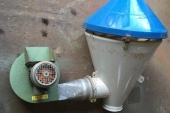
 1
1




Where there is Liberty, there is Christ!
 1
1





Where there is Liberty, there is Christ!
 2
2




 1
1




Where there is Liberty, there is Christ!

 2
2





 2
2




Where there is Liberty, there is Christ!

 2
2








Where there is Liberty, there is Christ!
 2
2




regards, Peter









Where there is Liberty, there is Christ!









Where there is Liberty, there is Christ!
 1
1




Where there is Liberty, there is Christ!




Where there is Liberty, there is Christ!
 2
2




Where there is Liberty, there is Christ!
 3
3




Where there is Liberty, there is Christ!




 1
1




Where there is Liberty, there is Christ!




Where there is Liberty, there is Christ!
 3
3




Where there is Liberty, there is Christ!
 1
1




 4
4




Where there is Liberty, there is Christ!
 1
1








Liquid Gold - WATER
 1
1




Joe Danielek wrote:Heating secondary combustion air is energy intensive robbing heat from the system, in my opinion providing excess combustion air better serves your end means.
Cyclone separator is going to rob or more correctly add to much friction for the system to perform correctly. It greatly diminishes volicity that which drops ash.




Liquid Gold - WATER
 3
3




Where there is Liberty, there is Christ!
 2
2




 1
1




Thomas Tipton wrote:
Jo,
one of the three experimental legs of this adventure is the use of ceramic glass in the ceiling of the combustion chamber as a means of eliminating all metal from the combustion chamber. I'll beg to differ with you about secondary air robbing the system of energy, I don't see how heating secondary air or supply an over abundance of primary air would make any difference to how much energy was required to heat that air. With a secondary air setup we are introducing the air at a strategic location, 100% primary air, as you suggest, is all introduced at the same location. I will build my stove door so I can cut off the secondary air and feed it all from the bottom. I really like the idea of having a 1/2 inch slot on the floor of the combustion chamber that allows the ash to fall through into a pan and the primary air volume is controlled via a vent on the end of the pan where the door seals against the stove. Alternatively, a cleanout door with a vent on it. I have seen these available commercially.
Regarding the cyclonic separation of ash in what I am now calling the "Inverted" or "Two-Phase" riser, if it happens, great, if it doesn't, no biggie, that aspect isn't a deal breaker for me. It's the idea of containing the combustion gases at the top of the outer cylinder and holding them there until they work their way down to the opening of the inner cylinder, up and out that most attracts me. I'll still put a cleanout in the bottom of that chamber for cleaning and to introduce a camera into it so I can see what's going on in there. Friction will be relative to the amount of space the gases have to circulate in. I don't see how my riser will generate any more friction than a straight vertical one that .
Liquid Gold - WATER
 1
1




Where there is Liberty, there is Christ!
 1
1




Liquid Gold - WATER




Where there is Liberty, there is Christ!
 2
2




Where there is Liberty, there is Christ!
 2
2




Where there is Liberty, there is Christ!

| I agree. Here's the link: http://stoves2.com |








